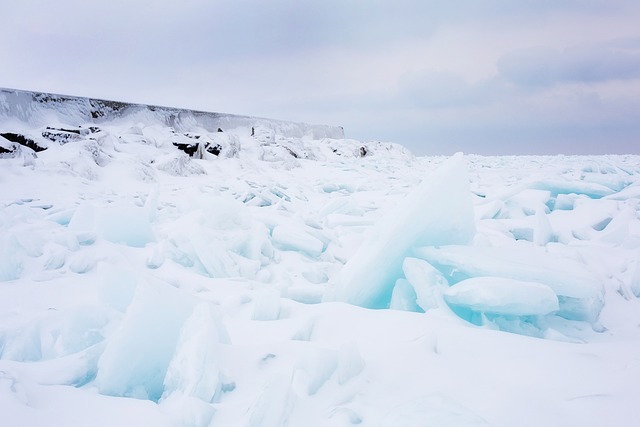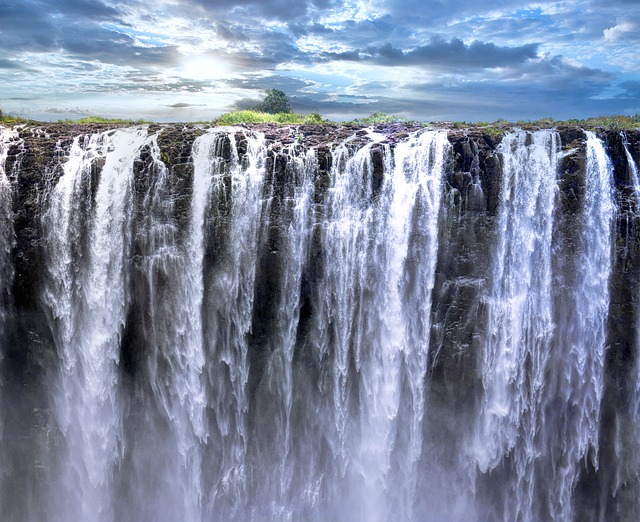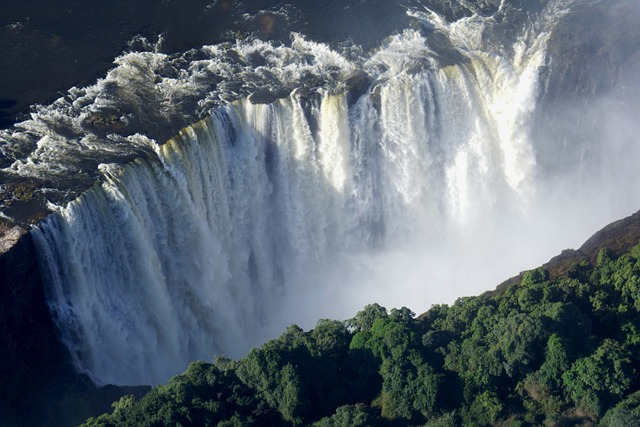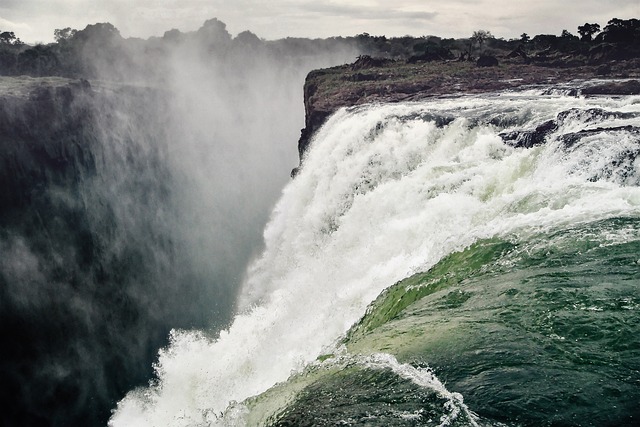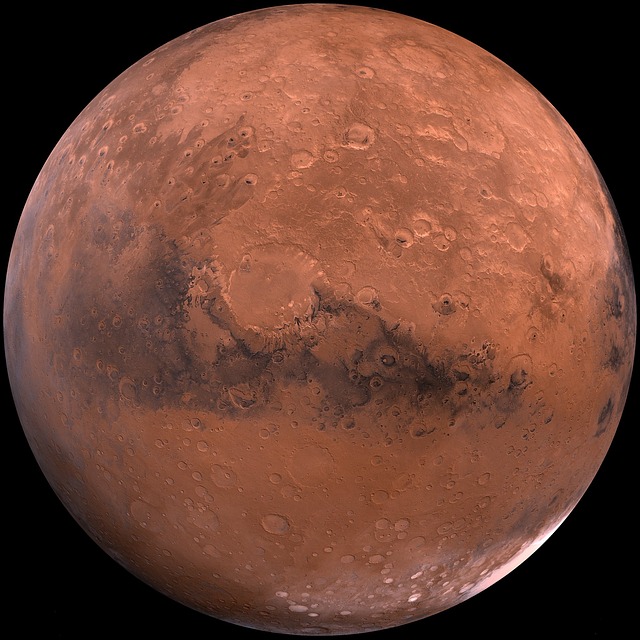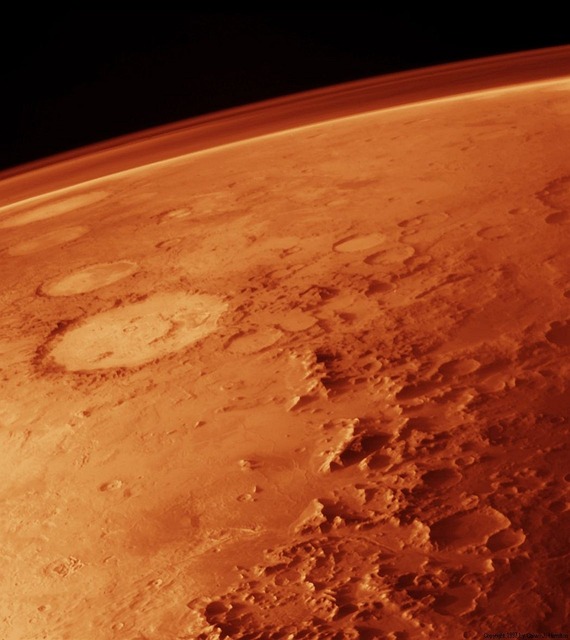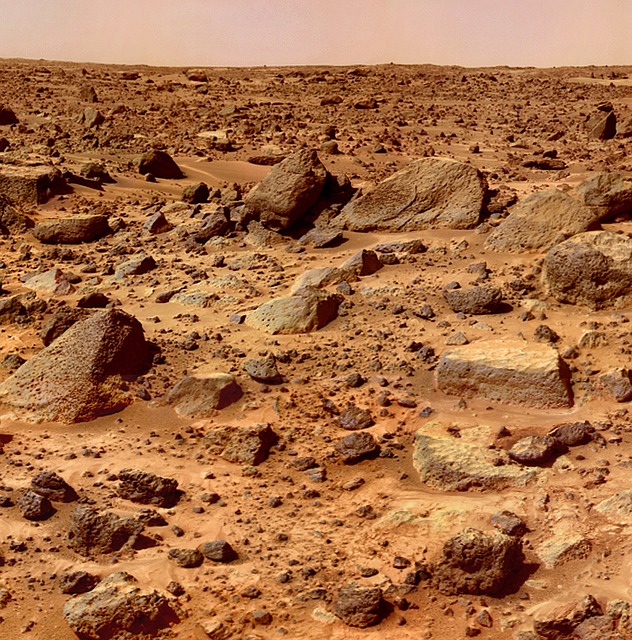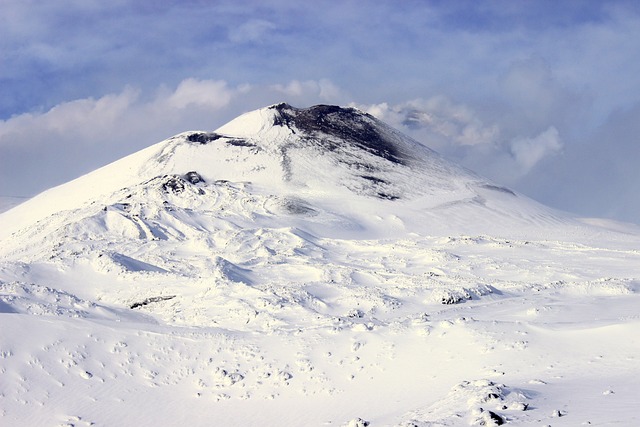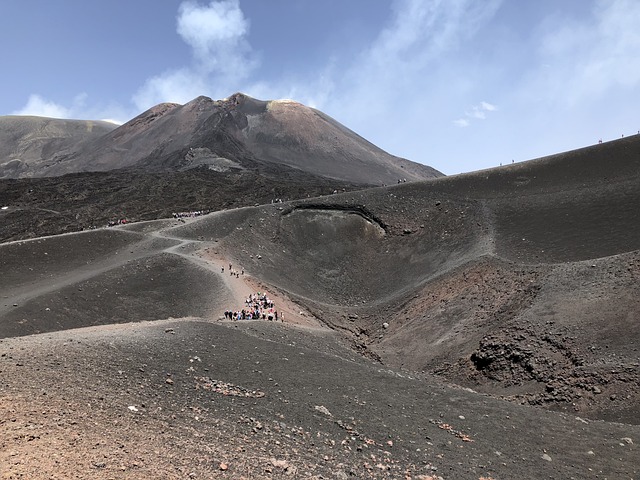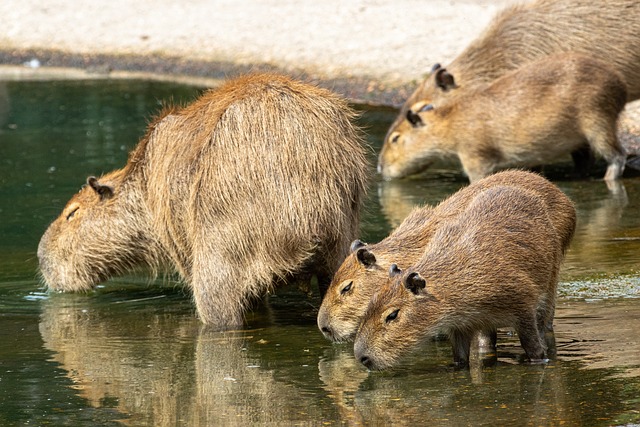Alternate realities have long been a subject of fascination, often prompting us to question the course of history and what could have been. One pivotal event that has captured the imagination of many is the Civil War in the United States. What if the Confederacy had emerged victorious instead of the North? It is a question that brings about endless possibilities and sparks curiosity.
In this article, we will delve into the idea of an alternate reality where the Confederacy prevailed in the Civil War. We will explore the potential consequences and implications of this outcome, ranging from political and economic shifts to cultural changes and their impact on modern-day America.
Join us as we venture into a world where history took a different turn, and the Confederacy came out on top.
Background of the Civil War
The Civil War, also known as the War Between the States, was a turning point in American history. It lasted from 1861 to 1865 and was fought between the United States of America and the Confederate States of America. This historic conflict was a result of the growing tension between the North and the South over issues such as states’ rights, slavery, and economic differences. The outcome of this war would determine the fate of the nation and shape its future for years to come.
The roots of the Civil War can be traced back to the founding of the United States. The question of slavery was a divisive issue, with the North gradually abolishing it while the South continued to rely on it as an integral part of their economy. This fundamental difference in beliefs and values would eventually lead to a clash between the two regions.

The North, also known as the Union, was primarily an industrialized society with a growing population and a diverse economy. On the other hand, the South, or the Confederacy, was an agricultural society with a heavy reliance on cash crops such as cotton, tobacco, and sugar. This economic disparity, coupled with political differences, created a growing divide between the two regions.
The cultures of the North and South also differed significantly. The North was more urban and diverse, while the South was predominantly rural and traditional. This cultural divide further widened the gap between the two regions and contributed to the tensions leading up to the war.
The Civil War officially began on April 12, 1861, when Confederate forces attacked Fort Sumter, a Union stronghold in South Carolina. This event marked the beginning of a long and bloody conflict that would claim the lives of over 620,000 soldiers and civilians.
Over the course of four years, the Civil War would see numerous battles and significant turning points. One of the most notable was the Battle of Gettysburg in 1863, which is considered a turning point in the war and a major victory for the Union. The Emancipation Proclamation, issued by President Abraham Lincoln in 1863, also played a significant role in the war by freeing slaves in the Confederate states and giving the Union a moral advantage.
As the war raged on, it became clear that the Union was gaining the upper hand. The Confederacy was struggling with resources and facing mounting losses. However, in an alternate reality where the Confederacy emerged victorious, the outcomes of these battles and events could have been drastically different.
The Civil War was a pivotal event in American history, and its causes and outcomes continue to be studied and debated. In the next section, we will explore the potential scenarios that could have led to the Confederacy’s victory and its implications for the nation and the world.
The Confederacy’s Victory
The possibility of the Confederacy winning the Civil War is a topic that has intrigued historians and scholars for decades. It is a subject that has sparked debates and discussions among experts and laypeople alike. To understand the implications of such an outcome, we must first explore the scenarios that could have led to the Confederacy’s victory.
One possible scenario is if the Confederacy had won the Battle of Gettysburg in 1863. This was a turning point in the war, and if the Confederacy had emerged victorious, it would have greatly boosted their morale and strengthened their position. Another possible scenario is if General Robert E. Lee had been successful in his invasion of the North, which could have forced the Union to surrender.
If the Confederacy had indeed won the Civil War, it would have had a profound impact on the country’s political, economic, and social landscape. The Confederate States would have emerged as a new nation, with its own government, laws, and leadership. This would have led to a major shift in power, as the North would have lost its hold over the South.
Economically, the Confederacy’s victory would have had significant consequences. The North and South had different economic systems, with the North being more industrialized and the South being reliant on agriculture, particularly cotton plantations. With the Confederacy’s victory, the South would have maintained its reliance on agriculture, while the North would have lost access to the cotton trade. This could have led to economic struggles for the North, as they would have had to adapt to a new economic system.
The fate of slavery and race relations in a world where the Confederacy won is a complex and controversial topic. While the Confederacy’s victory would have ensured the continuation of slavery, it is possible that with time, the pressure from other countries and changing global attitudes towards slavery could have led to its eventual abolishment. However, the impact on race relations would have been significant. The Confederacy’s victory would have reinforced and legitimized the idea of white supremacy, leading to continued discrimination and oppression of African Americans.
Politically, the country would have been divided into two separate nations with distinct ideologies. The Confederate States would have most likely continued to uphold states’ rights and a more conservative government, while the North would have maintained a stronger central government and progressive ideals. This division could have led to ongoing tensions and conflicts between the two nations, potentially hindering their progress and development.
Internationally, the Confederacy’s victory would have shifted the balance of power and potentially changed the course of history. Other countries, such as Britain and France, may have recognized the Confederate States as a sovereign nation and formed alliances with them. This could have greatly influenced international relations and foreign policy, as the Confederate States would have had different priorities and goals compared to the United States.
In conclusion, if the Confederacy had won the Civil War, it would have drastically altered the course of American history. The economic, political, and social consequences would have been profound and far-reaching, shaping the country and the world in ways we can only imagine. It reminds us of the importance of reflecting on the past and considering the “what if” scenarios, as they can provide us with a deeper understanding of our present and future.
The Aftermath of the War
The Civil War was a pivotal moment in American history, with the outcome shaping the country into what it is today. But what if the Confederacy had emerged victorious? How would that have changed the course of history? In this alternate reality, we explore the aftermath of the Civil War if the Confederacy had defeated the North.
Fate of Slavery and Race Relations:
One of the most significant consequences of the Confederacy’s victory would have been the continuation of slavery. The Southern states were heavily reliant on the labor of enslaved people for their economy, and a win for the Confederacy would have solidified their stance on keeping slavery intact. This would have had a devastating impact on the enslaved population, who had been hoping for their freedom with the Union’s victory. The Confederacy’s victory would have also perpetuated the brutal and oppressive system of racial segregation, which would have hindered any progress towards equality and justice.
Economic Consequences:
The Civil War had a significant impact on the economy, particularly in the South. If the Confederacy had won, the economic landscape would have been vastly different. The Southern states would have continued to rely on agriculture, with slavery still in place, while the North would have had to adjust to the loss of cheap labor and the Southern states’ resources. The Southern economy would have been strengthened, while the Northern economy may have faced challenges in recovering from the war.
Impact on Technology and Industry:
Another significant effect of the Confederacy’s victory would have been on the development of technology and industry. The North had a significant advantage in terms of industrialization and technological advancements, which ultimately helped them win the war. If the Confederacy had won, it’s possible that their focus on agriculture and reliance on slavery may have hindered the growth of industry and technology in the South. This could have also impacted the country’s overall growth and progress in the modern era.
Political Landscape:
With the Confederacy’s victory, it’s likely that two separate countries would have formed: the Confederate States of America and the United States of America. These two nations would have had different political ideologies, with the Confederacy holding onto their traditional values and the United States continuing to embrace progress and change. This could have led to a divided nation, with potential conflicts arising between the two countries. The role of other countries in this scenario would have also been significant, as they may have taken advantage of the division and influenced both nations’ political decisions.
Cultural Shifts:
In this alternate reality, there would have been significant changes in social norms, values, and beliefs. The Confederacy’s victory would have solidified their ideologies, including the belief in white supremacy and the inequality of races. This would have had a profound impact on literature, art, and media, as these forms of expression often reflect and challenge societal beliefs. The status of women in society may have also been affected, with the Confederacy holding onto traditional gender roles and limiting women’s rights and opportunities.
Modern Day Implications:
The Confederacy’s victory would have undoubtedly had a lasting impact on present-day America. It’s possible that significant events or milestones in history may have been altered or never happened. The Civil Rights Movement, for example, may have been delayed or not occurred at all, as the Confederacy’s victory would have perpetuated racial discrimination and segregation. The idea of “what if” is a powerful concept, and it forces us to critically examine our understanding of history and the events that have shaped our world.
Political Landscape
The aftermath of the Civil War would have undoubtedly had a profound impact on the political landscape of the United States, had the Confederacy emerged victorious. With the formation of two separate nations, it is likely that their political ideologies would have greatly differed, leading to significant changes in not only domestic policies but also international relations.
One of the most striking changes in the political landscape would have been the division of the United States into two separate countries – the Union and the Confederacy. The Union, which would have continued to exist in the North, would have most likely adopted a more liberal and progressive approach to governance, while the Confederacy would have been more conservative and traditional in their policies.
The Confederacy’s victory would have also meant that the newly formed nations would have had to establish their own governments and structures. This process would have required immense effort and negotiation, as both sides would have had to compromise and come to an agreement on issues such as taxation, representation, and states’ rights.
Furthermore, the impact of the Civil War on international relations cannot be overlooked. In a world where the Confederacy prevailed, it is likely that the balance of power would have shifted, with the United States no longer being a dominant force on the global stage. This could have potentially led to a realignment of alliances and trade agreements, as other countries may have seen the Confederacy as a rising power and sought to form closer ties with them.
Another important aspect to consider is the role of other countries in the aftermath of the war. It is possible that European powers, particularly those with strong economic ties to the South, may have recognized the Confederacy as a sovereign nation and established diplomatic relations with them. This could have had significant implications for the United States, as it would have had to navigate its relationship with these countries while also dealing with the aftermath of a devastating loss.
The divided nation would have also had a profound impact on national unity. With two separate countries, it is likely that there would have been deep divisions and tensions between the North and South, even long after the war ended. This could have hindered progress and cooperation between the two nations, leading to a slower recovery and development process.
In addition to political changes, the Confederacy’s victory would have also resulted in significant cultural shifts. The Confederacy’s traditional and conservative values would have influenced the social norms, beliefs, and values of their nation, while the Union’s liberal and progressive views would have shaped the culture of the North. This could have led to a stark contrast in the way of life between the two nations, with potential clashes between their ideologies and beliefs.
In conclusion, the political landscape of a world where the Confederacy emerged victorious in the Civil War would have been vastly different from the one we know today. The division of the United States into two separate nations, as well as the influence of different political ideologies and international relations, would have had a significant impact on the development and future of the country. While we can only speculate about what could have been, it is clear that the Confederacy’s victory would have shaped the political landscape of America in unimaginable ways.
Cultural Shifts
One of the most significant and lasting impacts of the Confederacy’s victory in the Civil War would have been the cultural shifts that would have taken place in the newly formed nation. These shifts would have been seen in various aspects of society, including social norms, values, beliefs, and even in the arts and media.
In terms of social norms, the Confederacy was rooted in a traditional and conservative way of life. This would have meant that there would have been a strong emphasis on traditional gender roles, where men were expected to be the breadwinners and women were expected to be homemakers. This would have also extended to the treatment of women in society, where their rights and opportunities would have been limited compared to men. This would have had a significant impact on the status of women in the Confederate States, and it is likely that there would have been a slower progression towards gender equality.
Moreover, the Confederacy was built on the institution of slavery, and its victory in the Civil War would have meant that this practice would have continued. This would have had a profound effect on race relations in the newly formed nation. The continued existence of slavery would have perpetuated systemic racism and further entrenched the idea of white supremacy. This would have posed a significant challenge to the progress made in civil rights in the present day.
In terms of values and beliefs, the Confederacy’s victory would have meant that the Southern way of life would have been preserved. This would have included traditional and conservative values, such as a strong sense of community and a deep-rooted belief in states’ rights. These values would have been passed down through generations, further shaping the cultural landscape of the Confederate States.
The impact of the Confederacy’s victory would also have been felt in the arts and media. Southern literature and art would have flourished, reflecting the values and beliefs of the Confederate States. This would have been a stark contrast to the literature and art of the North, which was heavily influenced by industrialization and urbanization. Furthermore, the media would have also been shaped by the Confederacy’s victory, and it is likely that there would have been a strong emphasis on promoting and preserving the ideals of the Southern way of life in the media.
Overall, the cultural shifts in a world where the Confederacy prevailed in the Civil War would have been significant and far-reaching. These shifts would have had a profound impact on the social, political, and economic landscape of the newly formed nation, and their effects would still be felt in the present day. It is a reminder of the power of history and how it continues to shape our world, even in alternate realities.
Modern Day Implications
The outcome of the Civil War had a profound impact on American history and shaped the country we know today. But what if the Confederacy had emerged victorious? How would that have affected the modern-day United States? Let’s explore the potential implications of this alternate reality.
The Confederacy’s victory in the Civil War would have undoubtedly led to the continuation of slavery in the South. This would have had significant consequences for race relations and the treatment of African Americans in the country. The abolishment of slavery in the North had a ripple effect on the entire nation, leading to the Civil Rights Movement and the fight for equality. In a world where the Confederacy won, it’s likely that systemic racism and discrimination would still be prevalent, hindering progress and hindering social justice movements.
Furthermore, the economic consequences of the Confederacy’s victory would have been substantial. The South heavily relied on slave labor for its agricultural industry, and without the abolishment of slavery, it’s unlikely that the industrialization and technological advancements seen in the North would have spread to the South. This could have led to a significant divide between the two regions, with the South remaining largely agricultural while the North continued to flourish economically.
Another crucial aspect to consider is the political landscape of the United States in this alternate reality. With the formation of two separate countries, the North and South, there would have been two distinct political ideologies. The Northern states were more industrialized and had a more centralized government, while the South favored states’ rights. This division could have caused significant tension and potentially even conflicts between the two nations. The lack of a unified country could have also impacted the country’s international relations and foreign policy, as the United States would no longer be a global superpower.
The cultural shifts in a world where the Confederacy prevailed would have been tremendous. The South’s traditional values and way of life would have remained dominant, while the North’s progressive ideas and cultural advancements may have been stifled. This could have had repercussions on literature, art, media, and even the status of women in society. The North’s rapid industrialization and urbanization led to greater opportunities for women to enter the workforce and break traditional gender roles. Without these advancements, the role of women in society may have remained limited.
It’s impossible to fully comprehend the extent of the modern-day implications in a world where the Confederacy won the Civil War. The outcome of the war had a domino effect on the events that followed, shaping our understanding of history. The possibility of a different outcome raises the question of “what if” and challenges our understanding of the past. It’s a reminder that history is not set in stone and that the smallest changes can have significant consequences.
In conclusion, the Confederacy’s victory in the Civil War would have had far-reaching implications on the political, economic, social, and cultural landscape of the United States. It’s a reminder of the power of one pivotal event to shape the course of history. While we can only speculate about this alternate reality, it serves as a reminder that history is not just about what happened, but also about what could have happened.



